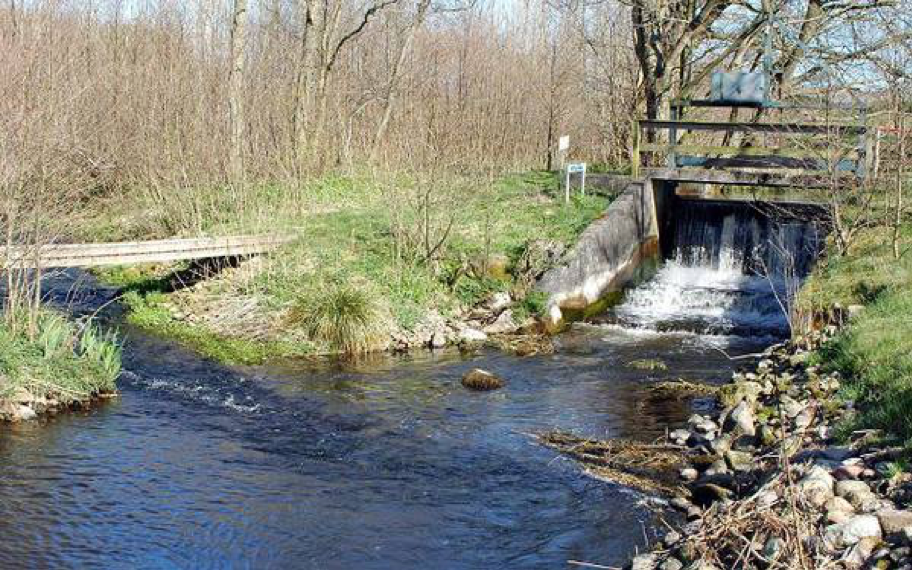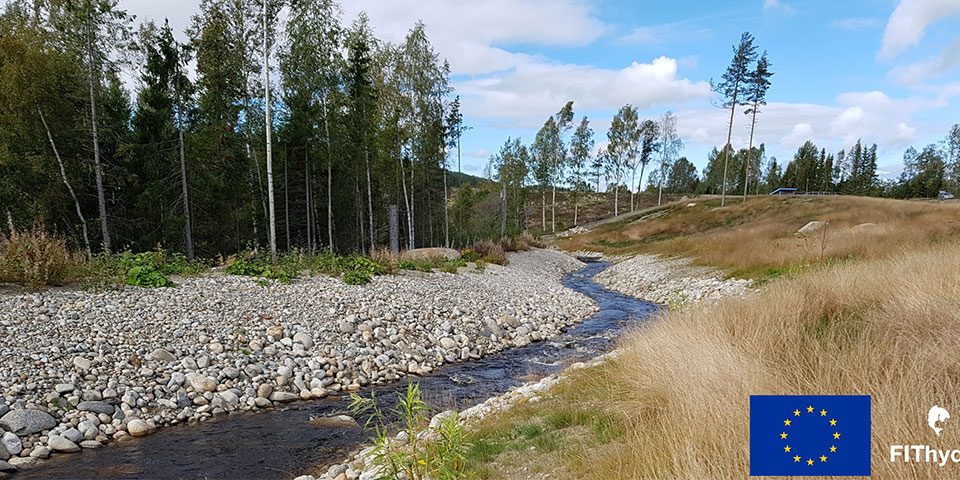Challenging the salmonid paradigm

Field validation for the barrier ATLAS
August 15, 2017
Barriers also ruin ideal habitats
October 19, 2017
Author
Kim Birnie-Gauvin
New study shows considerable downstream migration of juvenile trout outside of the classic smolt migration period, with important implications for the management of sea trout stocks. The results emphasize, for example, the need for establishing full-year fauna passage.
By: Kim Birnie-Gauvin
Section for Freshwater Fisheries and Ecology, National Institute of Aquatic Resources, DTU Aqua
By: Kim Birnie-Gauvin
Section for Freshwater Fisheries and Ecology, National Institute of Aquatic Resources, DTU Aqua
The brown trout (also known as sea trout) is a key fish species in Northern European rivers, constituting one of the most important recreational fishes in a range of countries. For decades, the classic description of brown trout life cycle has been that they are born in freshwater, and later migrate during spring to reach marine waters. The sea offers plenty of food, allowing the fish to attain large sizes. As large adults, they will then return to freshwater to spawn.
The current management plans use this so-called “salmonid paradigm” to manage fisheries and barrier practices. For example, some weirs and dams will be shut down during the peak spring migration to allow downstream migrating fish through. However, there is growing evidence that salmonids actually migrate all year long, with peaks in spring and the autumn, challenging the classic description provided in trout biology books. "Trout simply haven’t read them" says one of the authors of the study, Kim Aarestrup. A study led by DTU Aqua scientists showed that in fact, a significant proportion of the population migrates in the autumn, but also that their length and sex ratio resembled that of spring migrants.
The results challenge the salmonid paradigm and have important implications. The class of autumn migrants is not yet considered in current management practices, with potential devastating consequences. Population and survival estimates rely on measurements of spring migration rates hence population and survival measurements are underestimated. Current age determination methods, which also rely on the idea that juveniles migrate in the spring, as well as the width of growth rings on scales, may yield miscalculated ages. Migrations outside described peak periods are likely to be common occurrence in other fish species – fish may migrate more than we know. The consideration of these migrants in management practices, especially in the context of barriers, would be highly beneficial to the sustainability of fish populations.
The project is partly funded by the National Danish Fish Licence funds and Horizon 2020 project AMBER (Adaptive Management of Barriers in European Rivers).
Read the full story here: http://onlinelibrary.wiley.com/doi/10.1111/eff.12335/full
Reference: Aarestrup, K., Birnie-Gauvin, K., Larsen, M.H. (2017). Another paradigm lost? Autumn downstream migration of juvenile brown trout: evidence for a presmolt migration. Ecology of Freshwater Fish. DOI 10.1111./eff.12335
The current management plans use this so-called “salmonid paradigm” to manage fisheries and barrier practices. For example, some weirs and dams will be shut down during the peak spring migration to allow downstream migrating fish through. However, there is growing evidence that salmonids actually migrate all year long, with peaks in spring and the autumn, challenging the classic description provided in trout biology books. "Trout simply haven’t read them" says one of the authors of the study, Kim Aarestrup. A study led by DTU Aqua scientists showed that in fact, a significant proportion of the population migrates in the autumn, but also that their length and sex ratio resembled that of spring migrants.
The results challenge the salmonid paradigm and have important implications. The class of autumn migrants is not yet considered in current management practices, with potential devastating consequences. Population and survival estimates rely on measurements of spring migration rates hence population and survival measurements are underestimated. Current age determination methods, which also rely on the idea that juveniles migrate in the spring, as well as the width of growth rings on scales, may yield miscalculated ages. Migrations outside described peak periods are likely to be common occurrence in other fish species – fish may migrate more than we know. The consideration of these migrants in management practices, especially in the context of barriers, would be highly beneficial to the sustainability of fish populations.
The project is partly funded by the National Danish Fish Licence funds and Horizon 2020 project AMBER (Adaptive Management of Barriers in European Rivers).
Read the full story here: http://onlinelibrary.wiley.com/doi/10.1111/eff.12335/full
Reference: Aarestrup, K., Birnie-Gauvin, K., Larsen, M.H. (2017). Another paradigm lost? Autumn downstream migration of juvenile brown trout: evidence for a presmolt migration. Ecology of Freshwater Fish. DOI 10.1111./eff.12335



